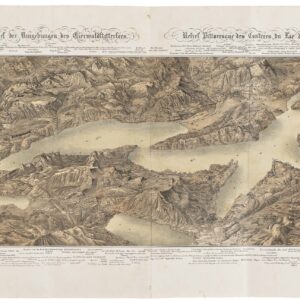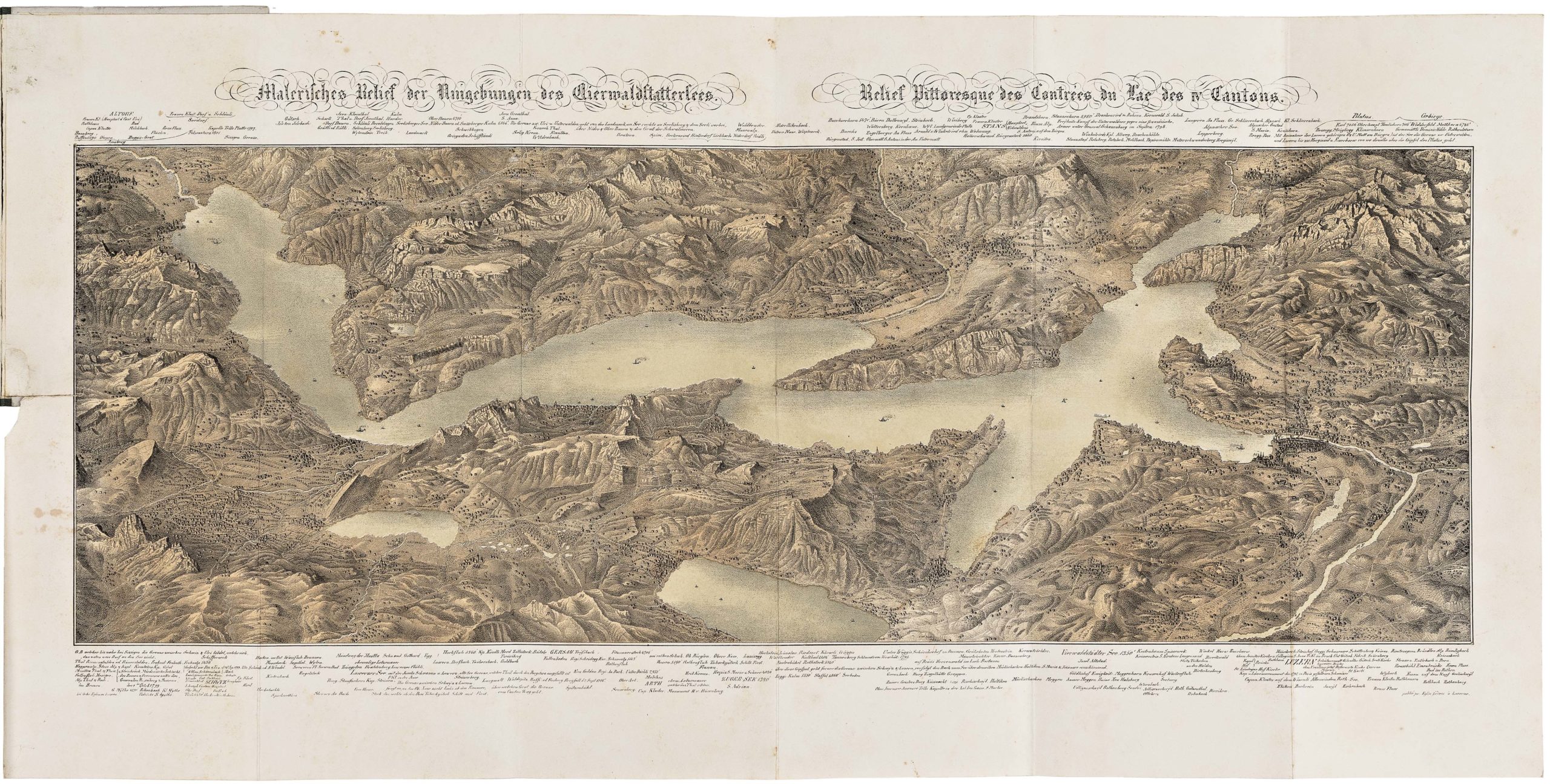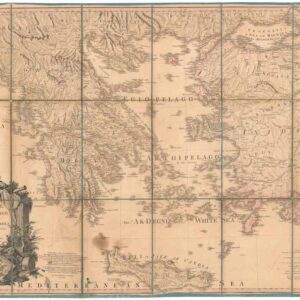Sebastian Münster’s mid-16th-century bird’s-eye-view of Paris.
Der Statt Paris ehrlicher maß figuriert und concrafhetet nach ietziger gelegenheit.
$825
1 in stock
Description
Sebastian Münster’s bird’s-eye-view of Paris, first engraved in 1549, is one of the earliest printed depictions of the city. This woodcut map presents Paris as a walled city oriented to the southeast, with its focal point on the Île de la Cité. The Seine River, cutting through the city like a spinal cord, divides the landscape. The view is enhanced with vibrant hand-coloring, highlighting intricate details and emphasizing notable landmarks, such as the city’s heraldry.
An ornamented legend in Gothic German flanks the view, identifying eight key structures, including the Royal Palace and Notre Dame Cathedral. A coat of arms bearing the royal fleurs-de-lis is prominently positioned in the upper right corner, underscoring Paris’s royal significance.
The primary source for Münster’s map was the Plan Premier, a monumental manuscript map of Paris created between 1523 and 1530. This source, which was regularly updated and maintained in city archives, served as the foundation for all seven 16th-century views of Paris, including Münster’s. The Plan Premier was a crucial piece of Paris’s cartographic history until its destruction in the 19th century, making Münster’s work an invaluable record of the city’s Renaissance-era urban layout.
Publication information
Originally created for the 1550 edition of Münster’s Cosmographia, this woodcut is among the earliest printed views of Paris. It was executed by the Swiss formschneider Hans Rudolf Manuel Deutsch (1525–1571), whose initials HR MD appear in the lower right corner. His work exemplifies the high-quality craftsmanship that Münster commissioned for his renowned cartographic publications.
This particular map comes from a German edition of Cosmographia Universalis, published in Basel in 1567. This monumental geographical and cosmological work succeeded Münster’s earlier Geographia. Unlike the Latin-only Geographia, the Cosmographia was published in German, Latin, French, and Italian, making it accessible to a broader European audience.
By 1567, the printing block for this map was beginning to exhibit signs of wear, attesting to its frequent use and enduring popularity.
Cartographer(s):
Sebastian Münster (1488-1552) was a cosmographer and professor of Hebrew who taught at Tübingen, Heidelberg, and Basel. He settled in Basel in 1529 and died there, of the plague, in 1552. Münster was a networking specialist and stood at the center of a large network of scholars from whom he obtained geographic descriptions, maps, and directions.
As a young man, Münster joined the Franciscan order, in which he became a priest. He studied geography at Tübingen, graduating in 1518. Shortly thereafter, he moved to Basel for the first time, where he published a Hebrew grammar, one of the first books in Hebrew published in Germany. In 1521, Münster moved to Heidelberg, where he continued to publish Hebrew texts and the first German books in Aramaic. After converting to Protestantism in 1529, he took over the chair of Hebrew at Basel, where he published his main Hebrew work, a two-volume Old Testament with a Latin translation.
Münster published his first known map, a map of Germany, in 1525. Three years later, he released a treatise on sundials. But it would not be until 1540 that he published his first cartographic tour de force: the Geographia universalis vetus et nova, an updated edition of Ptolemy’s Geography. In addition to the Ptolemaic maps, Münster added 21 modern maps. Among Münster’s innovations was the inclusion of map for each continent, a concept that would influence Abraham Ortelius and other early atlas makers in the decades to come. The Geographia was reprinted in 1542, 1545, and 1552.
Münster’s masterpiece was nevertheless his Cosmographia universalis. First published in 1544, the book was reissued in at least 35 editions by 1628. It was the first German-language description of the world and contained 471 woodcuts and 26 maps over six volumes. The Cosmographia was widely used in the sixteenth and seventeenth centuries and many of its maps were adopted and modified over time, making Münster an influential cornerstone of geographical thought for generations.
Condition Description
Hand color. Visible repairs, as seen on the image. Overall nice.
References



![[Map of Steamship Routes and the Railways and Post Roads of the Russian Empire]](https://neatlinemaps.com/wp-content/uploads/2020/04/NL-00827_Thumbnail-300x300.jpg)
![[Map of Steamship Routes and the Railways and Post Roads of the Russian Empire]](https://neatlinemaps.com/wp-content/uploads/2020/04/NL-00827-scaled.jpg)
![[Map of Steamship Routes and the Railways and Post Roads of the Russian Empire]](https://neatlinemaps.com/wp-content/uploads/2020/04/NL-00827-scaled-300x300.jpg)

